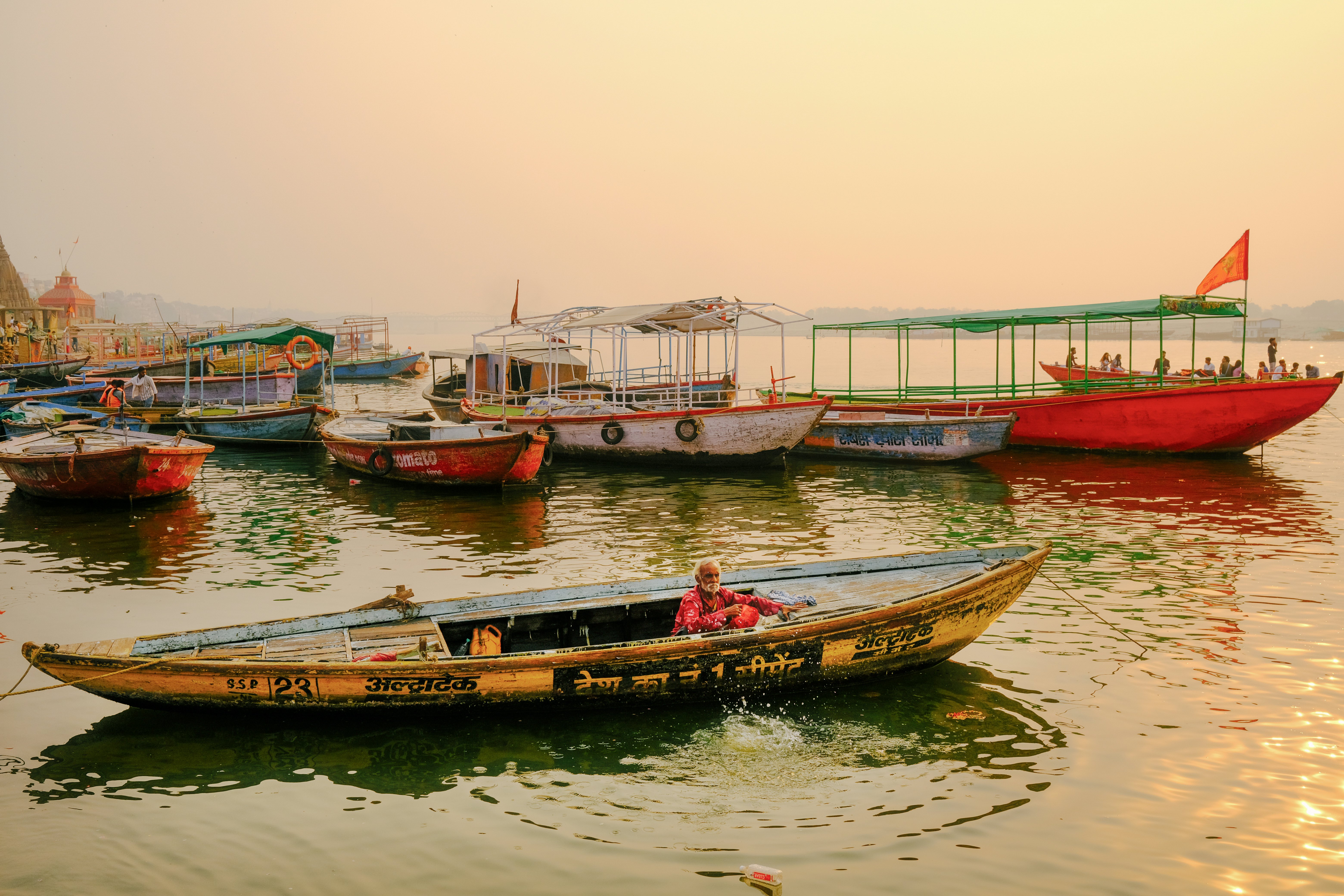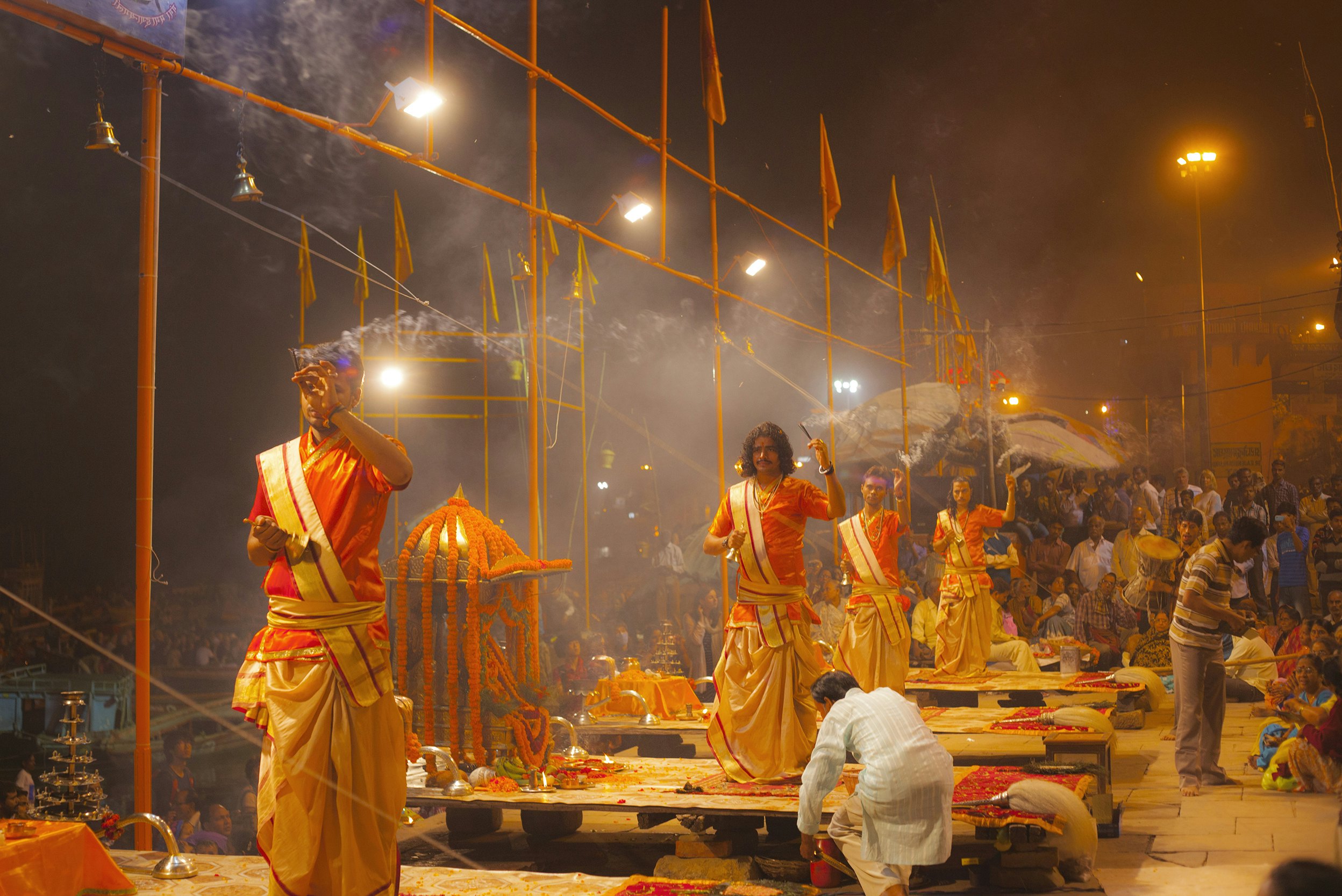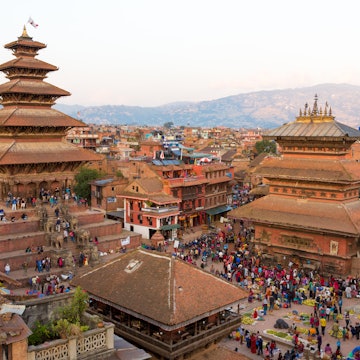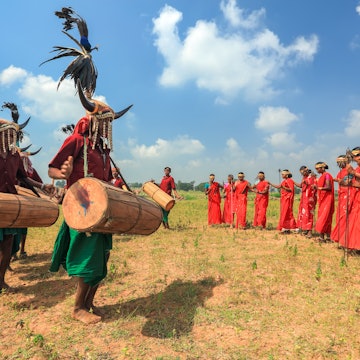

The atmosphere of Varanasi exerts a strong pull, and many visitors find themselves staying longer than expected. Marcos del Mazo/Shutterstock
Varanasi looms large in the minds of anyone contemplating a trip to India.
The deep faith traditions evident at every ghat, the photogenic colors and the tableau of humanity that comes to partake of the Ganges’ sacred waters here make Varanasi a magnet for spiritual seekers, intrepid travelers and documentary filmmakers alike.
Varanasi attracts tens of millions of visitors every year. Pilgrims come here from across India to commune with the sacred Ganges and mark life’s great turning points: birth, marriage and (most famously) death. For Hindus, Varanasi is the holiest place in India to be cremated, and offers the chance to achieve moksha, or a final release from the cycle of death and rebirth. Outdoor cremation ghats (steps that descend into the river) operate around the clock on the banks of the Ganges.
All this means that a visit to Varanasi inevitably includes a reckoning with the realities of life and death. And how can that not move and leave a deep impression on any visitor?
Don’t be surprised if Varanasi turns out to be your favorite place in India. Or at least one you’ll never forget.

When should I go to Varanasi?
The best time to visit Varanasi is from October to March. During the monsoon season (July to October), the city is hit by torrential rains and the Ganges swells with snowmelt from the Himalaya. The river level rapidly rises up to 12m, often flooding low buildings.
The fluctuating river level is the reason for all those steps on Varanasi’s ghats, and the reason the west bank of the Ganges is packed to bursting with buildings, while on the east side there is nothing but a sandy river bank that is inundated every season.
During the wet season, many ghats become inaccessible, and the ones you can get to are slippery with algae. This rules out one of Varanasi’s best experiences: a long riverside walk from ghat to ghat. You can access the ghats between April and June, but this time of year can be oppressively hot, with temperatures reaching 45°C (113°F).
How much time should I spend in Varanasi?
Allocate at least two days – but stay longer if you can. While there are only a handful of must-visit sights, the atmosphere of the city exerts a strong pull. Many visitors find themselves staying longer than expected.
With a little extra time you can also add a day trip to Sarnath, the tranquil pilgrimage town where Buddha gave his first sermon. If you decide to stay for a week or more, Varanasi is a great place for study, with classes in Hindi, yoga, Hindu mythology, Indian cooking, music and many other subjects available throughout the city.

Is it easy to get in and around Varanasi?
In the east of Uttar Pradesh, India’s most populous state, Varanasi is well connected to other parts of India by bus, train and air. To or from Delhi, trains take between 8 and 13 hours; flights to many cities in India take off from the airport, 24km northwest of town. Many travelers opt to break their journey at Varanasi on their way to or from Nepal.
Taxis and autorickshaws operate in town and out to the airport – but they can’t access the Old City. For the atmospheric galis (alleys) that make Varanasi so charismatic are too narrow for cars and tuk-tuks, even if plenty of motorcycles barge their way through.
You can get fairly close to Assi Ghat and Dashashwamedh Ghat in a car – though the Dashashwamedh area is closed to cars and tuk-tuks between 9am and 9pm. This means you should count on getting around the Old City and the ghats by foot.
As elsewhere in India, you have to haggle like a pro when negotiating fares for autorickshaws, boat rides and taxis. Agree to a fare before you get in – and if you find yourself being taken to shops or hotels where the driver receives a commission, refuse to get out of your ride. You can cut some of the haggle hassle by using a rideshare app like Uber – though you will need an Indian SIM to use these services.
Where should I stay in Varanasi?
Those narrow lanes also mean that if you choose to stay in the magical Old City, you’ll likely have to lug your bags through a maze-like route – sometimes a few hundred meters, with steps. Check with your accommodation when booking.
If that doesn’t sound like fun, stay in the new part of town, accessible to vehicles. Bedzzz Varanasi is a funky modern hotel with murals and a plant-hung atrium that’s only 1km from the ghat area. If your heart’s set on the Old City, opt for a place close to Assi Ghat, which has vehicle access. Hotel Ganges View is a beautifully restored haveli (historic mansion) overlooking Assi Ghat and crammed with books and antiques. If you’re happy to heft your pack, the longstanding traveler hangout in the Old City is Brown Bread Bakery Guesthouse, which has clean budget rooms and the fabulous Brown Bread Bakery downstairs.
Top things to do in Varanasi

Wake up early to witness dawn on the Ganges
Any visitor to Varanasi must arrange a river trip at dawn or dusk to see the city light up from the water. The early-morning light in the warmer months is particularly inspiring, with all the color and clamor of devotees bathing and performing puja (prayers), yogis saluting the sun and hawkers greeting the crowds.
Modernized Namo Ghat, just northeast of the Malviya Bridge, is the first fully wheelchair-accessible ghat in Varanasi, with road access and ramped pontoons for boarding boats.
Pay your respects to the goddess of India’s most storied river
Every day at sunset, the 45-minute aarti ceremony takes place to salute the live-giving goddess who is one with India’s most storied river. At Dashashwamedh Ghat, a line of priests moves in unison with sacred objects representing the five elements: a tiered diya, or flame lamp (representing fire), flower petals (earth), Ganga water, a yak-tail fan (ether, or space) and a peacock fan (air).
Sample the best lassi in town
Vendors are always in competition for Varanasi’s best lassi. For our money, the title holder is Blue Lassi, a hole-in-the-wall yogurt shop that’s been churning out 80 flavors of fresh, creamy, fruit-filled lassis since 1925. Served in earthenware pots and adorned with a colorful array of toppings – from pomegranate seeds to cashews, shaved coconut to fresh banana – these lassis are a must-try delicacy. Find them along the main route to Manikarnika Ghat.
Practice yoga on the ghats
There are few more inspirational places to practice yoga than in Varanasi at dawn, as the early morning light touches the ghats. Numerous institutions offer outdoor classes, including the fantastic Banaras Yoga School, which also has a program of yoga-themed cultural walks.

My favorite thing to do in Varanasi
I had huge expectations the first time I stepped onto the ghats – after all, this is one of the most evocative and storied destinations in the world. And Varanasi exceeded them.
Varanasi’s many ghats cluster together and almost merge into one another along the river’s edge. As you wander up, down and around the steps – past temples and boatmen; bathers quietly communing with the river; hawkers loudly selling their wares; sadhus, yogis, tourists and kids flying kites – the ancient rhythms of the city become instantly familiar. After all, this is one of the oldest continually inhabited cities in the world.
A good section to walk is the 3km from Assi Ghat to Manikarnika Ghat. While most ghats are used for bathing, several “burning ghats” – including Harishchandra Ghat and the larger Manikarnika Ghat – are dedicated to the sensitive ritual of cremating bodies. Here, the pyres burn around the clock, with the remains of up to 200 people transformed into smoke each day.
The fascinating network of cobbled galis through the old city returns you to the world of life and color – the odd cow occasionally blocking the way of porters bringing shrouded, flower-bedecked stretchers with bodies to the ghats just beyond.

How much money do I need for Varanasi?
India has options for travelers of all budgets, and Varanasi exemplifies this range. In recent years, the city has seen a boom in domestic and international visitors, with ever-growing options for luxury travelers in both accommodation and dining. Still, Varanasi remains a key destination on the backpacker trail, and there are plenty of options for travelers on a budget.
Hostel room: ₹800–1200
Basic room for two: ₹1200–5000
Luxury hotel: ₹5000+
Autorickshaw from the train station to the Old City: ₹200
Lassi: ₹60
Thali meal: ₹200
Dinner for two in a mid-range restaurant: ₹500

Respect the cremation workers
Varanasi’s Dom community is tasked with tending the fires of the burning ghats. Traditionally, this workforce is drawn from the lowest ranks of the Dalits, who occupy the bottom of the Hindu caste system. With a high risk of respiratory illnesses due to the smoke, this work isn’t easy – and Doms, the frequent victims of discrimination, often have no other choice but to pursue this difficult career. Spare a thought for these workers as you witness the moving cremation and aarti rituals from the comfort of your boat.
Be cautious when deciding to smoke bhang or drink alcohol
Varanasi is one of India’s most important centers of Shaivism (a form of Hinduism), and bhang (marijuana), a part of Shaivite religious tradition, is widely available here. While the sale of cannabis is illegal in India, there are in fact around 200 government-approved bhang shops in Varanasi. Still, you can never be sure if authorities will be lenient, and bhang products can be potent; travelers have been robbed or worse while under the influence. Be cautious.
Note that as a deeply spiritual center, drinking alcohol, especially near the Ganges, is frowned upon in Varanasi. Some tourist-oriented places do still serve alcohol, but it’s more respectful to head into the newer part of town if you’re after a drink.
Mind the marauding monkeys
Monkeys have free run of the Old City – and they can be aggressive, particularly if you are carrying food. Monkeys can also carry rabies, so give them a wide berth and always close the doors and windows to your room if you leave, even if it’s just to go to the lobby.















